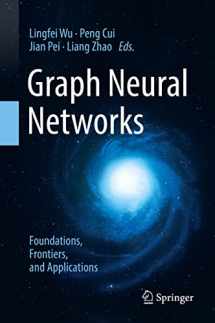
Graph Neural Networks: Foundations, Frontiers, and Applications
Book details
Summary
Description
Deep Learning models are at the core of artificial intelligence research today. It is well known that deep learning techniques are disruptive for Euclidean data, such as images or sequence data, and not immediately applicable to graph-structured data such as text. This gap has driven a wave of research for deep learning on graphs, including graph representation learning, graph generation, and graph classification. The new neural network architectures on graph-structured data (graph neural networks, GNNs in short) have performed remarkably on these tasks, demonstrated by applications in social networks, bioinformatics, and medical informatics. Despite these successes, GNNs still face many challenges ranging from the foundational methodologies to the theoretical understandings of the power of the graph representation learning.
This book provides a comprehensive introduction of GNNs. It first discusses the goals of graph representation learning and then reviews the history, current developments, and future directions of GNNs. The second part presents and reviews fundamental methods and theories concerning GNNs while the third part describes various frontiers that are built on the GNNs. The book concludes with an overview of recent developments in a number of applications using GNNs.
This book is suitable for a wide audience including undergraduate and graduate students, postdoctoral researchers, professors and lecturers, as well as industrial and government practitioners who are new to this area or who already have some basic background but want to learn more about advanced and promising techniques and applications.


We would LOVE it if you could help us and other readers by reviewing the book
Book review



